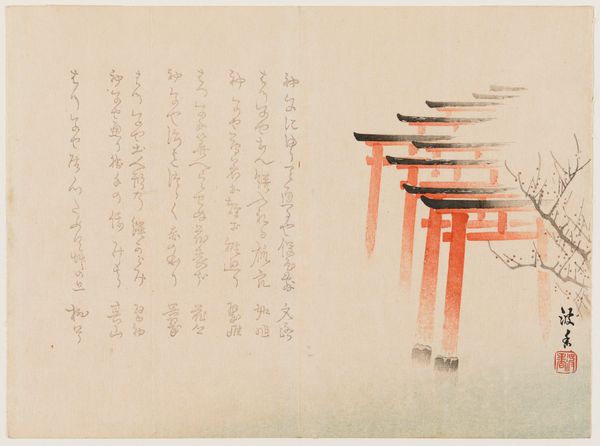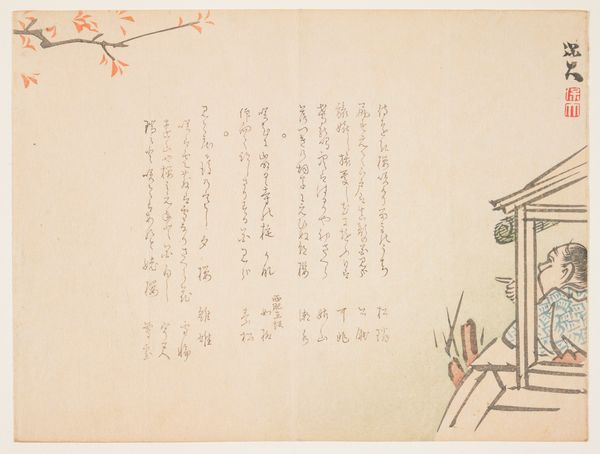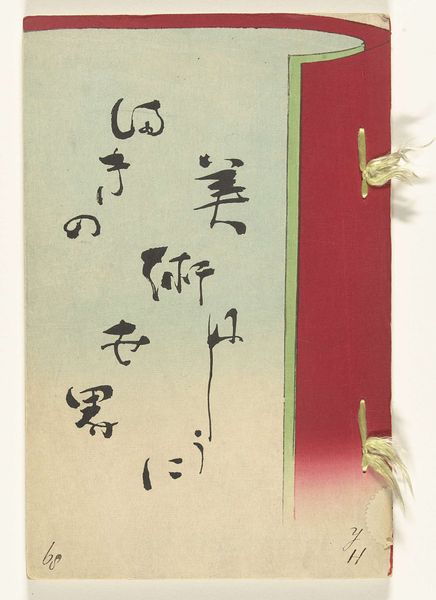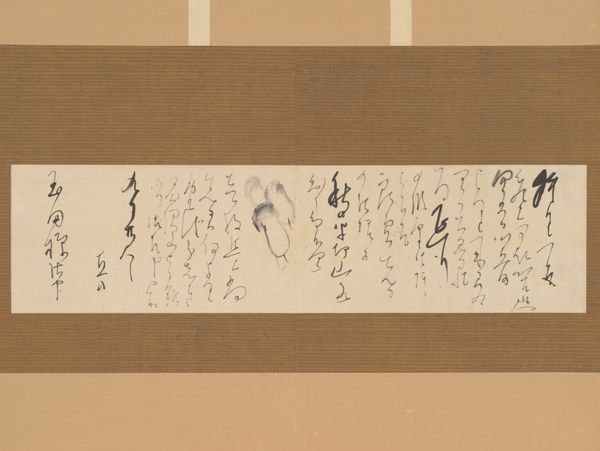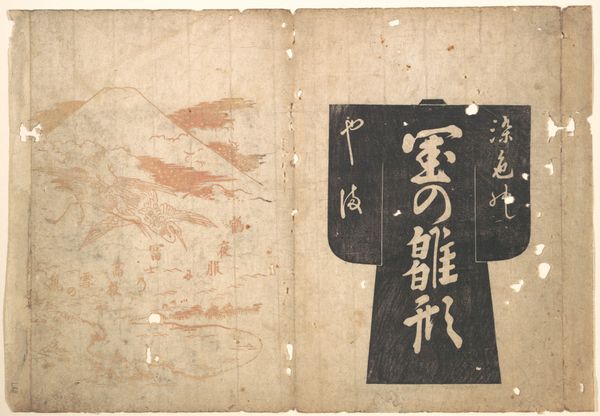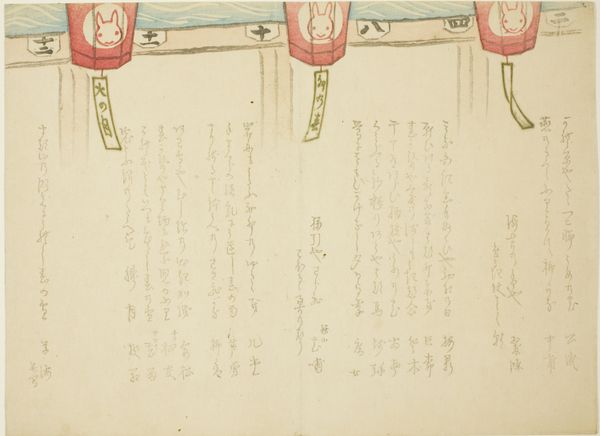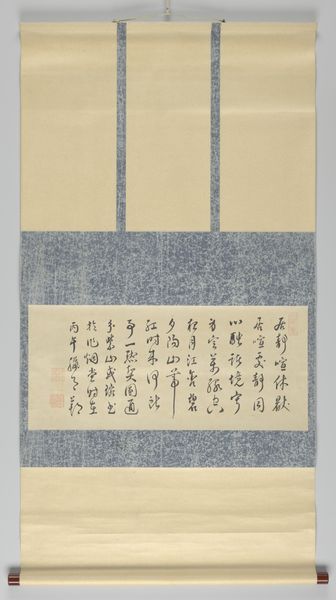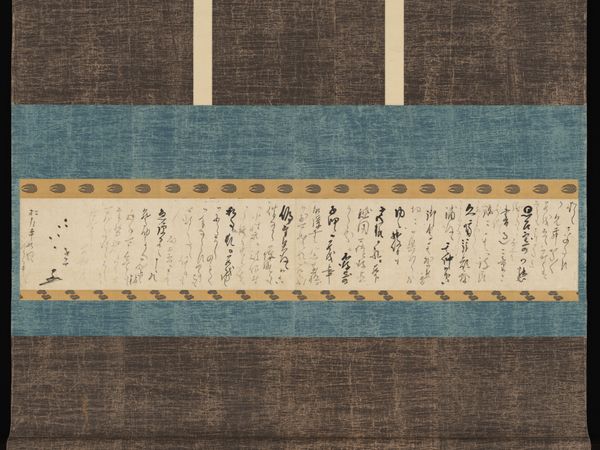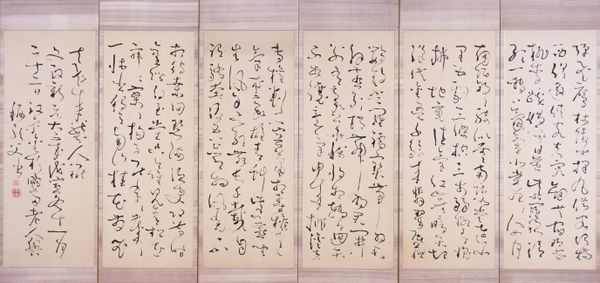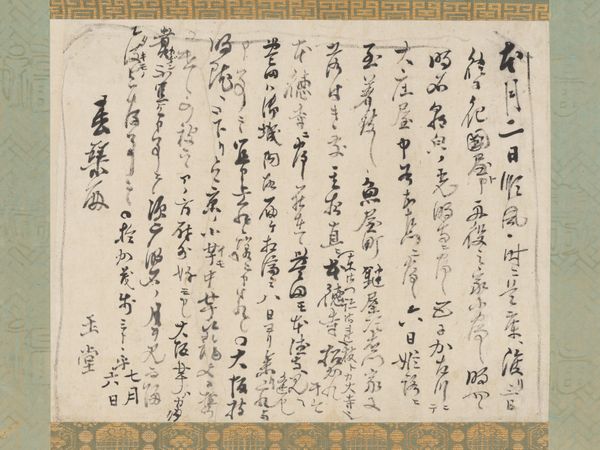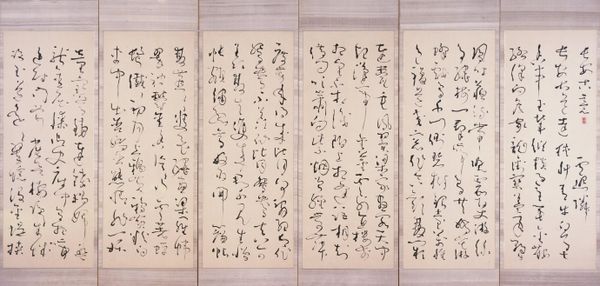
painting, print, textile, paper, watercolor, ink
#
water colours
#
painting
# print
#
asian-art
#
textile
#
ukiyo-e
#
paper
#
personal sketchbook
#
watercolor
#
ink
#
watercolor
Dimensions: 7 1/4 x 9 3/4 in. (18.4 x 24.8 cm) (image, sheet)
Copyright: Public Domain
Curator: This personal sketchbook page, aptly named "(Banners)" and attributed to Satō Hōdai from around the 1860s, is a delicate watercolor and ink on paper. Editor: My initial reaction is one of quiet contemplation. The piece evokes a fleeting, almost dreamlike state. The faded colours contribute to a sense of transience. Curator: Indeed. What appears as delicate banners likely pointed towards political undertones or the expression of communal values of the time. These are not mere decorations; they’re indicators of shared beliefs and potentially, dissent. The presence of accompanying text is extremely significant in my interpretation, alluding to literary societies using a historical lens. Editor: I can see how you arrive at that conclusion, but I find myself drawn more to the geometric interplay, especially the contrasts in scale and form between the banners. There’s a distinct harmony between the flat planes of color and the subtle gradations within the paper. Curator: Right, however it’s critical we read these colors beyond formal properties. During this period, even the colors chosen for banners had symbolic meaning relating to class and ideology. Note how these are juxtaposed deliberately, suggesting possible tensions between groups or regions. Editor: A fascinating suggestion, and I cannot overlook the repetition and mirroring in the banner arrangements. They structure our view—directing us between layers of signs and meanings with an undeniable sense of balance. Curator: And that structured viewing is by design— meant to guide the viewer through a prescribed reading of cultural narratives. Consider the lack of sharp lines as a deliberate attempt to soften rigid ideologies. The artist prompts us to negotiate our space between these floating, ambiguous emblems. Editor: While I value the cultural framing you offer, the artistry lies also in how the image challenges traditional spatial relationships and encourages dynamic shifts in perspective, inviting many equally relevant interpretations of space and meaning. Curator: Agreed. In delving into Satō Hōdai's “(Banners),” we start unpacking a complex narrative woven between aesthetic form and its sociopolitical landscape. Editor: Yes, precisely! I recognize now how this focused observation enriches and perhaps reshapes my own perceptions, allowing for nuanced reflections on cultural forms and design.
Comments
No comments
Be the first to comment and join the conversation on the ultimate creative platform.
